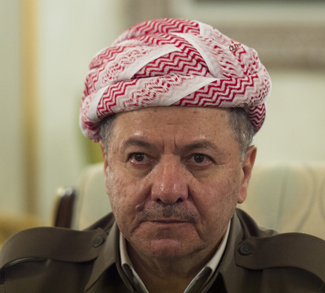In April 2016, Shafi Armar, known by his nom de guerre Yousuf al-Hindi, was reported to have been killed in a US drone strike in Syria. Shafi Armar, as we are aware, was managing the operations of the Islamic State in India.
Shafi Armar is the younger brother of Sultan Armar from Bhatkal in Karnataka. Sultan Armar along with Sajid Bada, alias Abu Turab al Hindi, were some of the key members of the Indian Mujahideen in India. All of them, including Shafi Armar, crossed over to Pakistan from India. Apparently, they fell out with Riyaz Bhatkal and Iqbal Bhatkal who were managing the operations of the Indian Mujahideen and started Ansar ut Tawhid (AUT), the recruitment wing of Islamic State in India. Both Sajid Bada and Sultan Armar have been killed fighting for the Islamic State in Syria. After the demise of his brother, Shafi Armar took over the reins of AUT and started scouting for potential recruits in India to travel to Syria.
Shafi Armar has managed to inspire some youngsters to be a part of the Islamic State in India. Initially, the recruits were moved to Syria from India clandestinely. At present, 27 Indians have travelled to Syria to fight for the Islamic State. 7 of them including Shafi Armar have been killed in Syria. However, as the Indian authorities upped the ante by increasing online surveillance and monitoring at the borders, travelling to Syria has become more difficult. Hence, potential recruits have started to operate within India under “Junood al Khalifa-e Hind” (The army of the Caliphate in India). In the beginning of 2016, 25 members of Junood al Khalifa-e Hind were picked up by the National Investigation Agency from different parts of India, all of whom were part of Shafi Armar’s grand strategy.
Given this backdrop, the death of Shafi Armar may come as music to the ears of Indian security planners if confirmed. Some experts believe that Shafi Armar’s removal from the equation may drastically impact Islamic State’s ability to recruit and to conduct terror attacks in India. Will his death actually be a death knell for the Islamic State? Not exactly because of a variety of factors.
Unlike the existing networks of other terrorist groups in India, which are non-virtual, the network of the Islamic State cells is hybrid, operating virtually as well. Again, unlike non-virtual networks where there are face-to-face meetings between nodes, nodes within virtual networks interact only virtually. Incidentally, Islamic State’s recruitment has been done through online chat rooms and messengers. Once the initial members were radicalized online, the rest of the recruitment pool was managed by them locally. For instance, only 8 out of the 25 arrested members of the Junood al Khalifa-e Hind were actually in touch with Shafi Armar. Once these 8 were radicalized online by Shafi Armar, they in turn were involved in the face-to-face recruitment of the rest. Thus, the current Islamic State network appears to exhibit the characteristics of a virtual network upto a point and transforms into a non-virtual network when it comes to activity within India. However, it is imperative to mention that even within India, members have been in constant communication in a virtual environment using internet and mobile based communication applications. From a law enforcement perspective, intercepting hybrid networks is relatively difficult as they are built to weed out redundancies and deficiencies observed in a non-virtual network as well as virtual networks.
Interestingly, there appears to be a fine distinction with respect to the recruitment of Indians who have travelled to Syria and Indians who have formed the domestic cells within India. Most of Indians who have travelled to Syria, barring the six Indian Mujahideen members, have been radicalized online. And within this basket of Indians, a good majority have been inspired by Islamic State members based in Syria and Iraq. Shafi Armar’s name does not figure prominently among the recruiters in this basket. On the other hand, even among the Indians who are part of the cells within India recruited under the banner Junood al Khalifa-e Hind and subsequently arrested, only eight out of 25 were actually in touch with Shafi Armar. Even within those in touch with Shafi Armar, nobody has been able to meet him personally or even see him virtually. Thus, there are ostensibly other recruiters apart from Shafi Armar who have their focus vectored on India.
And most importantly, in the contemporary terrorism landscape, the key to a terror organization’s survivability is the virtual character of the network. As Stern and Modi have observed in their seminal work entitled Producing Terror: Organizational Dynamics of Survival, virtual networks are designed to optimise resilience hence are highly difficult to interdict compared to other forms networks. More notably, a leader’s role is inspirational rather than the one that commands in a virtual network and followers can become leaders at a moment’s notice. Given these traits of virtual networks, Shafi Armar’s role can be said to be inspirational. His involvement in day-to-day affairs of the cells within India have been kept at a minimum level and limited only to the extent of giving directions. Notwithstanding the above, Shafi Armar did provide some financial assistance to this group initially. This could possibly be an exception to the above rule, providing the necessary initial “seed capital” when we factor the formative stage of the cells in India.
Given the resilience of the virtual networks, new leaders emerge and grow rapidly in a virtual network. After Sultan Armar’s death, Shafi Armar took over the reins. Now, after Shafi Armar’s removal, others will certainly step in to fill the void. That’s the beauty of the virtual networks! Moreover, the internet provides an ideal platform for likeminded persons to meet online and share their views. In other words, internet facilitates “community building,” where members could meet others without having to meet them face-to-face. In the Indian context, where internet is part and parcel of a majority of Indians, connecting with likeminded persons with extreme ideology is not going to be difficult.
In conclusion, given the access to technological advancement facilitated by internet, organizations built on virtual networks such as the Junood al Khalifa-e Hind may not be affected by the death of its key leaders or removal of key nodes as perceived by security planners. Removal of a node in a virtual network could spawn more controls and checks within the network, which could increase the difficulty to infiltrate these virtual networks in future. Though, Shafi Armar’s death is going to slow down the activities of Islamic State in India, it is not good enough to stop it from regrouping in the future.




